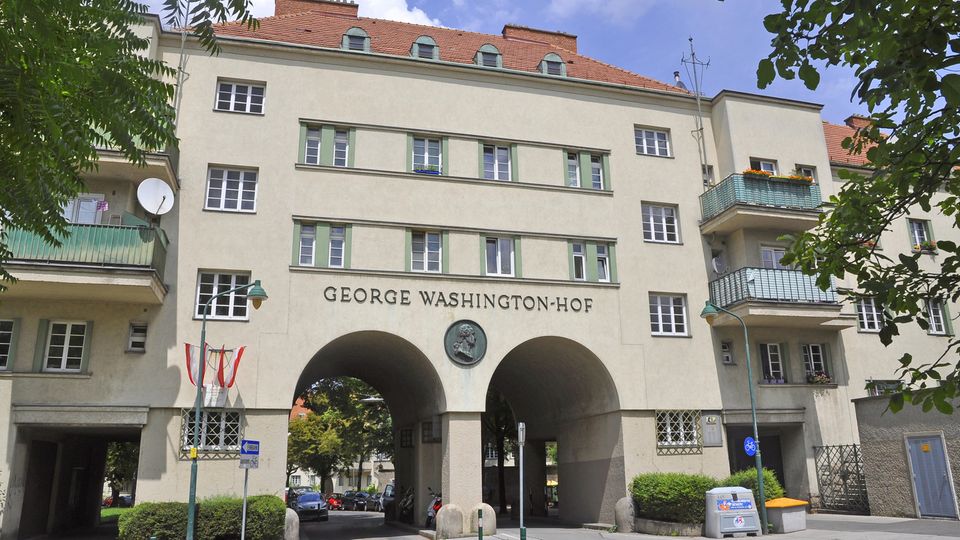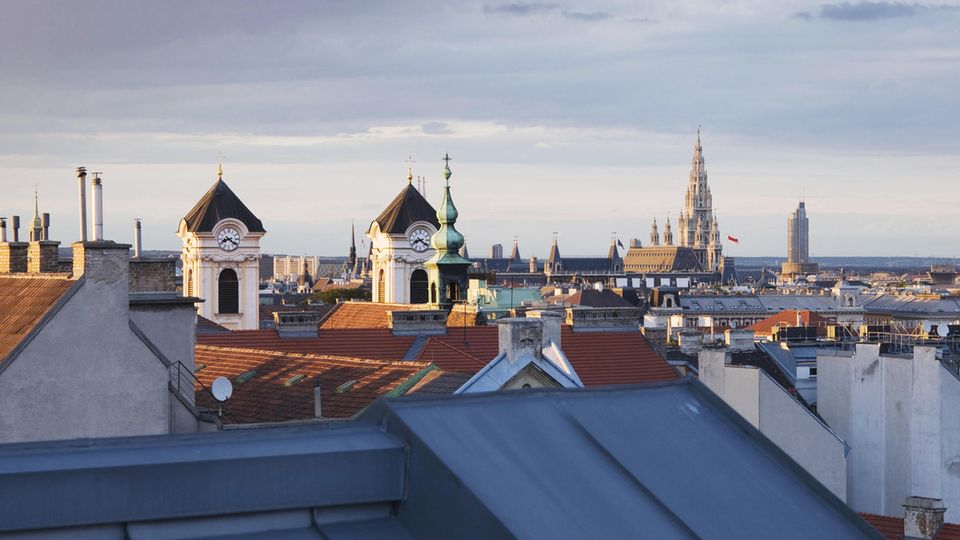London, Paris, but also Hamburg and Munich: rents are exploding in Europe’s cities. Almost a hundred years ago, Vienna embarked on an urban development path that has kept rents affordable to this day. A role model for large German cities?
It must have been chaotic times in Vienna: Even before the outbreak of World War I, the city was bursting at the seams, and rental apartments were urgently needed. After the end of the war, many soldiers returned to the city and families from the Habsburg Empire moved to Vienna. Because there were too few apartments, some newcomers built huts on the outer city limits. Homeless people were part of the cityscape.
After all, the Tenant Protection Act of 1917 ensured that rents were frozen at pre-war levels. Robert Danneberg, one of the co-founders of social housing policy in Vienna, is said to have said in 1921: “The landlords would have been the worst winners of the war if a state power had not put a stop to their goings-on. That the warrior out there in the field for the fatherland would have been his own Losing limbs or even life, and while at home his wife and children are being thrown into the street by the homeowner, would have been unbearable, especially from the point of view of warfare . “
Dannenberg, murdered in Auschwitz in 1942, was a co-thinker of the “Red Vienna”, an epoch between 1918 and 1934 in which the Social Democrats ruled Vienna and took a course in housing policy that continues to have an impact today.
More living space for Vienna
Even if rents could not explode thanks to the regulation – there was still too little living space at the time. From 1921 Vienna got serious: Those who lived alone in large apartments had to make room for families, and vacant hotels were also converted into living space. But that still wasn’t enough. In addition, the rent protection ordinance made building new apartments less attractive for private builders. So the city took action.
Anyone who drives through Vienna today will find plenty of relics from that time. Between 1923 and 1934, living space for around 220,000 people was created. The new living space was awarded using a point system: Those who had physical disabilities received more points and thus had the chance of an apartment in the newly built community buildings. Large families were also considered. There were communal laundry rooms, kindergartens and libraries there. “Chamber, kitchen, cabinet” – this is how the 42 square meter apartments were described.

The period between the world wars was the cornerstone on which Vienna’s urban development is still based today. Every fourth rental apartment in the city also belongs to her. Vienna not only owns these properties, but also manages them. The profits made by renting are capped and have to be reinvested. In contrast to Germany, where social housing usually only has a low rent for a certain period of time – ten or twenty years – the Viennese apartments remain socially bound. Half of all apartments in the city are given to families below a certain income limit. Bubbling income from perpetual rent increases? That is hardly conceivable in Vienna.
And: What was built back then as a social housing is now a lovable old building from the 1920s. The social housing was then designed as courtyards, based on the idea of garden cities. Good connections were important, but there was also enough green space in the inner courtyards. And Vienna continues to build in the spirit of this past. Around 9,000 publicly funded apartments are completed every year. For comparison: In Hamburg – a similarly large city – there are 3000, in Cologne 2100 and in Frankfurt around 4800. It is not that easy for the Viennese builders either. There, too, the sought-after properties are not a bargain.
Social housing in Vienna
This housing policy has an impact on residents: on average, Viennese pay 4.75 euros per square meter, plus 15 cents for reserves, almost two euros in operating costs and ten percent VAT. Unlike in Germany, the apartments are not only given to the really socially disadvantaged. As a single person you can earn 44,000 euros annually, as a couple around 66,000 euros and as a family with two children 83,000 euros.
With these income limits, three out of four Viennese can enjoy living in a city apartment. The low barriers to living in the community housing have another effect: This avoids ghettos in which only the socially disadvantaged live. Vienna gets such a mix that is just as wanted.

Social housing in Germany: Lots of applicants, few apartments
In Munich, on the other hand, it is only 40 percent, in and in Hamburg only around 19 percent who are even entitled to live in social housing. In the Hanseatic city in the north, this is due to the high income hurdles. In Hamburg, a three-person household is only allowed to live in a social housing if the household income is not higher than 48,900 euros. Having that is not because of the income limit. The Hanseatic city has almost 80,000 social housing – but almost 370,000 households are entitled to live in social housing.
Municipal apartments are also in great demand in Vienna. Who can move in there is regulated – as it was then – a point system. Whereas in the past war invalids had priority, today it is families with children, the disabled, the needy or even single parents.
But Vienna is not quite the peaceful living environment. Since the financial crisis, investors across Europe have been looking for lucrative properties away from the financial markets. Inner-city apartments, as concrete gold, are a welcome source of returns. Now, on Thursday last week, Vienna passed new building regulations that will have – and perhaps should have – a deterrent effect on investors. Two thirds of all apartments that will be built in the future must be created as “subsidized living space”. And these apartments may cost a maximum of five euros per square meter.
The conservative ÖVP understands this amendment as a “retro-socialist declaration of war”. And the real estate industry is also appalled. Because the regulation takes effect immediately – this also applies to land that has not yet been built on but has already been purchased. The investment would no longer be worthwhile, moan the property developers and reap a shrug from the SPÖ and the Greens. The construction companies themselves have driven up prices.
Social Preservation Ordinance in Hamburg: Senate becomes active
But it seems as if a rethinking is gradually taking place in Germany as well: They don’t want to leave urban development to investors and housing groups without a fight. In Hamburg recently there was a demand to protect tenants from displacement and rental price explosion. A potential buyer had made it quite clear that he was not interested in the Social Preservation Ordinance.
Just one district further in Altona, other homeowners are now also threatened with forced sales to the city. According to the Senator for Urban Development Dorothee Stapelfeldt (SPD), this is just the beginning. “This is a clear signal to speculators,” the “NDR” quotes the senator. Robert Danneberg and the “Red Vienna” co-designers would have been delighted.
Source From: Stern
Jane Stock is a technology author, who has written for 24 Hours World. She writes about the latest in technology news and trends, and is always on the lookout for new and innovative ways to improve his audience’s experience.




